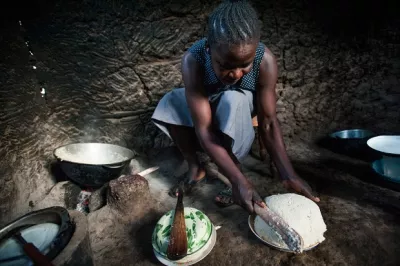What Donors Can Learn From the FSD Experience
The case studies from the Financial Sector Deepening (FSD) Network offer a wealth of experience on what it takes to facilitate inclusive financial markets. As Joe Huxley mentions in his blog, the knowledge condensed in the case studies will be put to practical use across the FSD network and hopefully also inspire other market facilitators. Given that the FSD trusts are donor-funded entities, what can donors take away from the case studies?

Form and function matter
FSD trusts are quite exceptional entities that differ both in form and function from traditional donor programs. When setting up the first FSD, DFID was purposefully looking for an organizational form that would be closer to the market it was supposed to influence. While the FSDs across the network do not all follow the same organizational setup (models include multi-donor trusts, special purpose vehicles, companies or contracting out), they all come with a level of independence, flexibility and long-term vision that donor programs often lack. The case study on FSD Kenya, which looks at 10 years of market facilitation, highlights that setting up FSD Kenya with a distinct market facilitation function made a difference in how FSD Kenya set its objectives, engaged in the market, and was perceived by market actors.
Less control can lead to better results
The FSD experience suggests that less donor control leads to better results. Focusing on outcomes rather than specific deliverables in funding agreements implies a different model of accountability, which offers FSDs more flexibility and room to experiment. This does not mean that funders should be fully “hands-off,” but instead use their engagement to set the right incentives for reaching the strategic goals and help make connections with other FSDs or funder programs, rather than for controlling in a narrow sense.
Avoid too much funding and disbursement pressure
Market facilitation is time intensive rather than capital intensive. Too much funding can push facilitators to become too active in their markets or aim for solutions that cannot be sustained with local capacity and funding. Quoting from the case study on FSD Zambia, “International aid often defines itself by the scale of funding it brings to bear – it tries to ‘buy’ impact. FSD Zambia shows that softer measures can be just as effective – and more sustainable.” In the work on savings groups, FSD Kenya carefully assessed cost-effectiveness and looked for training and support models that matched local capacity, which made them more likely to be taken up by local service providers.
Funders should not view FSDs as mechanisms for channeling funding to market actors, although there might be cases where this is appropriate. In general, if there are funding gaps in a market, donors should work with facilitators to define a strategy on how to improve local capital markets or to attract foreign investment, rather than fill funding gaps with donor money. See for example FSD Tanzania’s efforts to catalyze access to finance for micro, small and medium enterprises by creating an alternative investment channel of the Dar es Salaam Stock Exchange.
People make facilitation work
This is probably the most obvious lesson from the case studies, but also one of the most difficult ones to get right. Facilitators are entrepreneurial, knowledgeable, risk-taking, good communicators, team workers and humble enough to stay in the background. Where can donors find such people? And how can donors assess these qualities when reading CVs included in proposals? Beyond finding the right people and investing in building the right skills, how can donors make sure that they live up to their potential? This is probably where donors have more influence by creating a culture of learning and experimentation, seeing facilitators as partners rather than contractors and adjusting processes to the unpredictable nature of market facilitation.
Donors can learn a great deal from the FSD case studies. However, partnering with FSDs is only one way for donors to support market facilitation. Some donors contract out market facilitation or support other types of implementers. Some donors act as facilitators themselves. Unfortunately, the lessons from these experiences are not as well documented as those from the FSDs. CGAP aims to build a broader knowledge base on market facilitation that spans different implementation models. A recent case study looks at USAID’s role in facilitating a more inclusive financial services market in the Philippines. If you have other examples to share, please post them in the comments section.




Add new comment